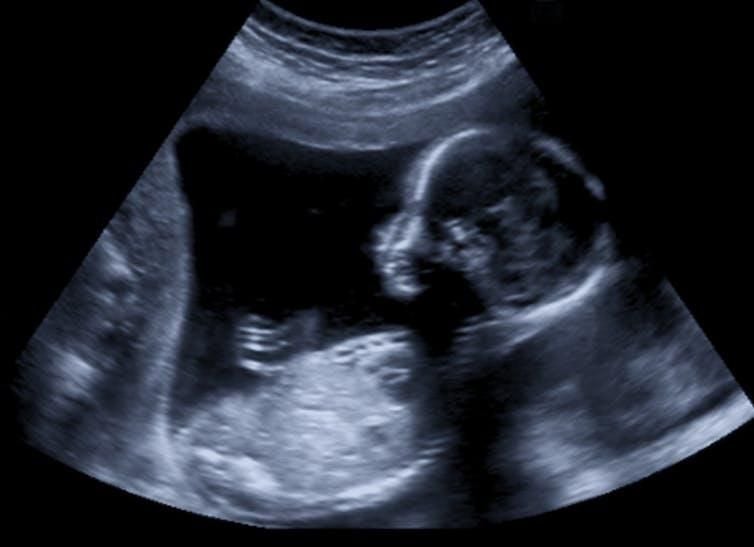Mothers Adopt a Universal Tone of Voice When They Talk To Babies
And other surprising facts about how we speak to infants
/https://tf-cmsv2-smithsonianmag-media.s3.amazonaws.com/filer/45/ea/45eacf9e-0ae9-4508-9c61-048e2d6db515/file-20171010-17703-1rklsf.jpg)
Here’s an experiment to try next time you meet a baby, try holding a normal conversation. It is very difficult, isn’t it? Yes it is! Oh, yes it is!
When we talk to babies we all naturally switch into a high-energy, singsong tone. We use simple words and short sentences. We sound excited. Our pitch rises at the end of the sentence. These particular characteristics of “parentese” or infant-directed speech (IDS) seem to be common across many languages.
A new study, published in Current Biology, has suggested there are universal changes in vocal timbre when talking to babies. Timbre describes the quality of a voice or a musical instrument. The difference between a violin and a trumpet playing the same note is a difference in timbre.
Elise Piazza, a postdoctoral researcher at the Princeton Neuroscience Institute, invited 12 English-speaking mothers to Princeton Baby Lab and recorded them talking to their babies (aged eight to 12 months) and to an adult. The recordings were converted into “vocal fingerprints” using a standard statistical method. This produces a unique frequency profile for a given speaker that can reliably discriminate one speaker from another based on timbre.
Elise and her colleagues, Marius Iordan and Casey Lew-Williams, then used a computer algorithm to compare adult and infant-directed speech. This seemed to show that all mothers consistently alter the timbre of their voice when talking to babies.
The authors ran several controls to show that this is not just a result of mothers speaking in a higher pitch to babies. But the real test came when a further 12 mothers speaking nine different languages, including Spanish, Russian and Cantonese, were also recorded. The algorithm picked up the same difference between their adult- and infant-directed speech.
Elise describes the change as a “cue mothers implicitly use to support babies’ language learning.” The next hypothesis is that infants might detect this difference to help them know when they are being addressed. The researchers are looking for ways to test this. It would be consistent with what we already know about IDS: we do it to help babies learn.
Patricia Kuhl has shown that IDS exaggerates the differences between vowel sounds, making it easier for babies to discriminate words. This pattern was found in English, Russian and Swedish. Other research found that IDS has the acoustic features of happy, adult-directed speech, and the authors said that “what is special is the widespread expression of emotion to infants in comparison with the more inhibited expression of emotion in typical adult interactions.”
Babies learning language perform some amazing feats. From the muffled confines of the womb, they have already learned enough that, at birth, they prefer their mother’s voice and her native language to another woman or another language.

A recent study found that premature babies in intensive care make more vocalisations in response to hearing adults’ speech. If adults stop responding, infants notice and also cease.
Testing five-month-old infants with this procedure also found that the infants ceased vocalising. Moreover, the more in tune these infants were to their caregiver’s behaviour at five months, the better their language comprehension was at 13 months.
In another charming study, researchers recorded proto-speech of three- to four-month-old infants talking to themselves. The babies expressed a full range of emotions in their squeals, growls and gurgles.
Clearing up a mystery
Incidentally, this new research may also clear up a mystery from my own work. Last year when we were helping Imogen Heap create a song that makes babies happy, we advised her to make sure she recorded it in the presence of her 18-month-old daughter. Research from the 1990s showed babies can tell the difference; they prefer singing that is genuinely infant directed. I never quite believed this at the time but now this new measure of timbre will let us test this out.
For babies, just as for adults, language is truly learned in conversation. From the very beginning, babies want to join in and proto-conversations start between mothers and their newborns; nursing mothers wait for pauses in their infants’ actions to talk to them. This new research highlights a universal signal that is there to let babies know that we are talking to them.
Yes we are! Oh, yes we are!
This article was originally published on The Conversation.
Caspar Addyman, Lecturer in Developmental Psychology, Goldsmiths, University of London

